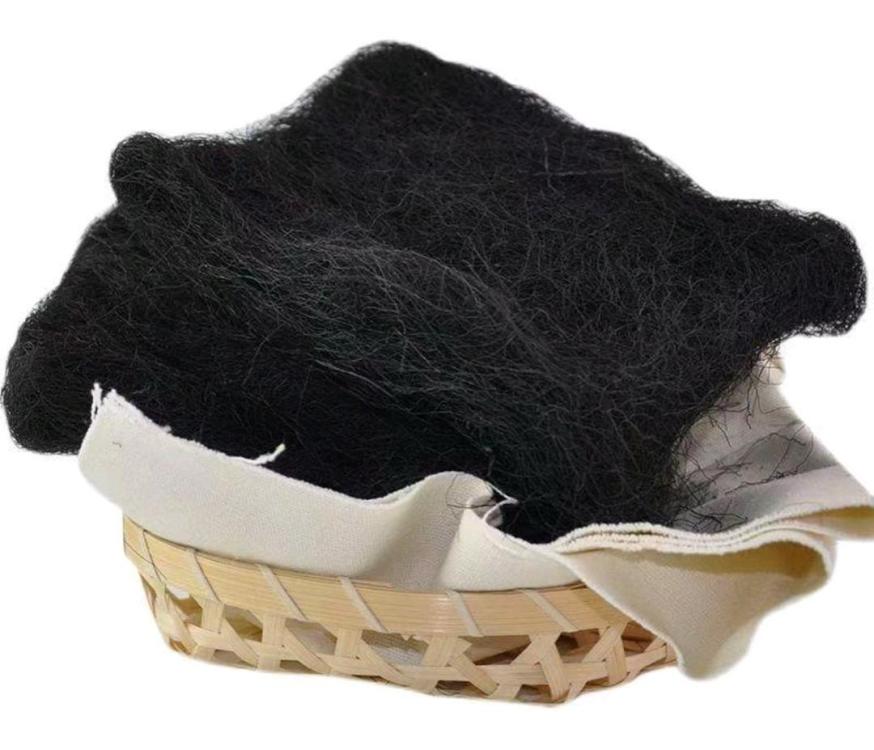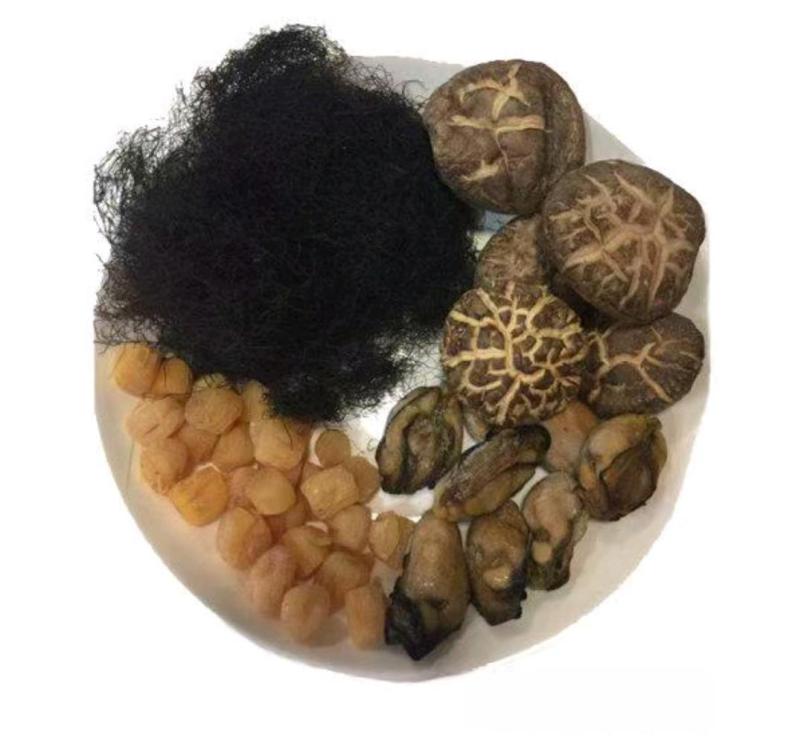I'm sure what you fancy for dinner tonight are some "small nonvascular plants with spores and gametophytes"*. Luckily, Chinese cuisine has you covered.
S: 发菜; T: 髮菜 (fà cài) (Cantonese: fat choy), Nostoc flagelliforme is known in English as long thread moss, edible black moss or hair moss (the literal translation of the Chinese).
This terrestrial algae is particularly popular at Chinese New Year, not for any culinary reason but a linguistic one. The names is a near homophone of the last two characters of the New Year greeting 恭喜发财 (Mandarin: gōng xǐ fā cái; Cantonese: gong hei fat choy) meaning 'to become prosperous'. **
Until recently, this was harvested in the Gobi Desert and on the Qingdao plateau. Due to overharvesting this has now been banned almost everywhere in China only minimal production being permitted.
This has led to price increases and a lot of fake moss being sold although it's not difficult to spot the fakes. The real deal is a dark bluish-green whereas the fakes are pure black.
It is also produced in Vietnam, which hasn't banned it, so far as I can determine. In Vietnamese it is tóc thiên (literally 'angel hair').
Wherever it comes from, it comes cleaned and dried. When rehydrated, it visually resembles long vermicelli
If you do get hold of it, a great way to use it is with dried oysters. A search for 'oysters with fat choy' will turn up recipes.
It has an affinity with mushrooms and dried scallops and is used in soups and hotpot.
Dried moss, dried shiitake, dried oysters, dried scallops
But perhaps the best known dish for CNY is Buddha's Delight, a dish for which there are as many recipes as there are Buddhists. You could start here:
https://www.adayinthekitchen.com/buddhas-delight/
* Encyclopedia Brittanica
** Actually, this is nowhere near the most common CNY greeting. S: 新年快乐; T: 新年快樂 (Mand: xīn nián kuài lè; Cant: sun nin fai lok, 'Happy New Year!) is by far the most common.




